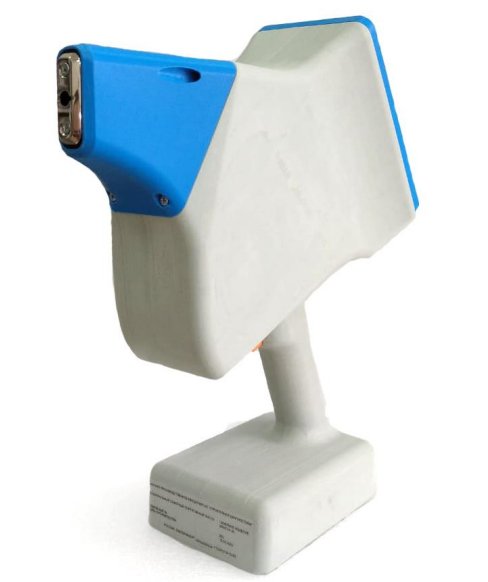Metal Spectrometers Explained: Accuracy, Technology, and Benefits
If you are finding a solution to check the metal, then you must read this blog. This article provides you with the best metal spectrometer.

Metal spectrometers are essential tools in industries requiring precise elemental analysis. From metallurgy to aerospace, these devices are crucial in ensuring material quality and compliance with industry standards. This article explores metal spectrometers' accuracy, technology, and benefits, providing insights into their importance in modern applications.
What is a Metal Spectrometer?
The Rimlas metal spectrometer is a specialized analytical instrument used to determine the elemental composition of metal samples. It works by measuring the spectral emission, absorption, or fluorescence of a sample when exposed to energy sources like lasers, X-rays, or electric arcs. These devices help industries identify impurities, verify material specifications, and maintain product integrity.
Accuracy of Metal Spectrometers
Factors Affecting Accuracy
The accuracy of a metal spectrometer depends on several factors:
-
Calibration – Regular calibration against certified reference materials ensures precise measurements.
-
Sample Preparation – Proper sample surface treatment eliminates contamination and enhances measurement consistency.
-
Instrument Type – Different spectrometers, such as Optical Emission Spectrometers (OES) and X-Ray Fluorescence (XRF) spectrometers, offer varying levels of accuracy.
-
Environmental Conditions – Temperature, humidity, and external interferences can impact spectrometer readings.
Typical Accuracy Levels
Modern metal spectrometers provide accuracy levels within 0.01% to 0.1% for major elements and trace-level detection in parts per million (ppm). High-end instruments, such as laser-induced breakdown spectroscopy (LIBS) devices, achieve exceptionally precise readings, making them suitable for advanced applications like aerospace engineering and medical device manufacturing.
Technologies Used in Metal Spectrometers
1. Optical Emission Spectroscopy (OES)
OES is widely used in metallurgical applications. It operates by exciting a metal sample with an electrical discharge, causing it to emit characteristic light wavelengths. These wavelengths are analyzed to determine the element composition. OES is highly effective for detecting light elements like carbon and sulfur.
2. X-Ray Fluorescence (XRF)
XRF spectrometers use high-energy X-rays to excite atoms in a metal sample, producing secondary X-ray emissions. These emissions are analyzed to identify and quantify elements. XRF is a non-destructive technique suitable for rapid on-site analysis in industries like mining, recycling, and manufacturing.
3. Laser-Induced Breakdown Spectroscopy (LIBS)
LIBS employs high-energy laser pulses to create plasma on the sample surface. The emitted light from the plasma is analyzed for element identification. LIBS is known for its speed, minimal sample preparation, and ability to analyze light elements like lithium and beryllium.
4. Inductively Coupled Plasma Optical Emission Spectroscopy (ICP-OES)
ICP-OES is used for highly sensitive elemental analysis, often in laboratories. The metal sample is introduced into a plasma torch, where it is atomized and excited. The emitted light is then analyzed to determine precise elemental composition.
Benefits of Metal Spectrometers
1. Improved Quality Control
Metal spectrometers help industries maintain strict quality control standards by ensuring that raw materials and finished products meet required specifications. This prevents product failures and enhances reliability.
2. Non-Destructive Testing
XRF and LIBS spectrometers allow for non-destructive testing, preserving the integrity of valuable samples while providing accurate results.
3. Cost and Time Efficiency
Advanced spectrometry techniques reduce the need for lengthy chemical analyses, providing rapid and cost-effective material identification.
4. Compliance with Industry Standards
Many industries, such as aerospace, automotive, and pharmaceuticals, require strict adherence to material composition standards. Metal spectrometers help companies comply with international regulations like ASTM, ISO, and RoHS.
5. Versatility in Applications
These instruments are used across various sectors, including manufacturing, mining, recycling, jewelry authentication, and forensic investigations.
Conclusion
Metal spectrometers are indispensable tools for accurate and efficient elemental analysis. Their advanced technologies, including OES, XRF, LIBS, and ICP-OES, provide reliable solutions for industries requiring high precision. With benefits like enhanced quality control, regulatory compliance, and cost efficiency, metal spectrometers continue to play a vital role in modern material analysis and manufacturing processes.
What's Your Reaction?
















.jpg)
.jpg)

